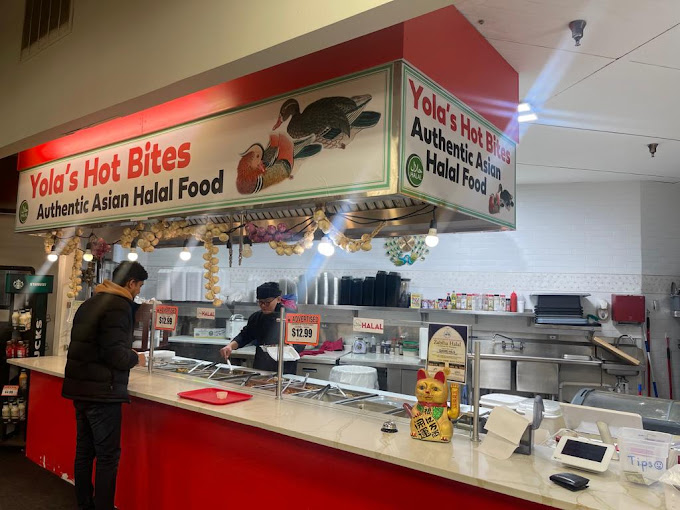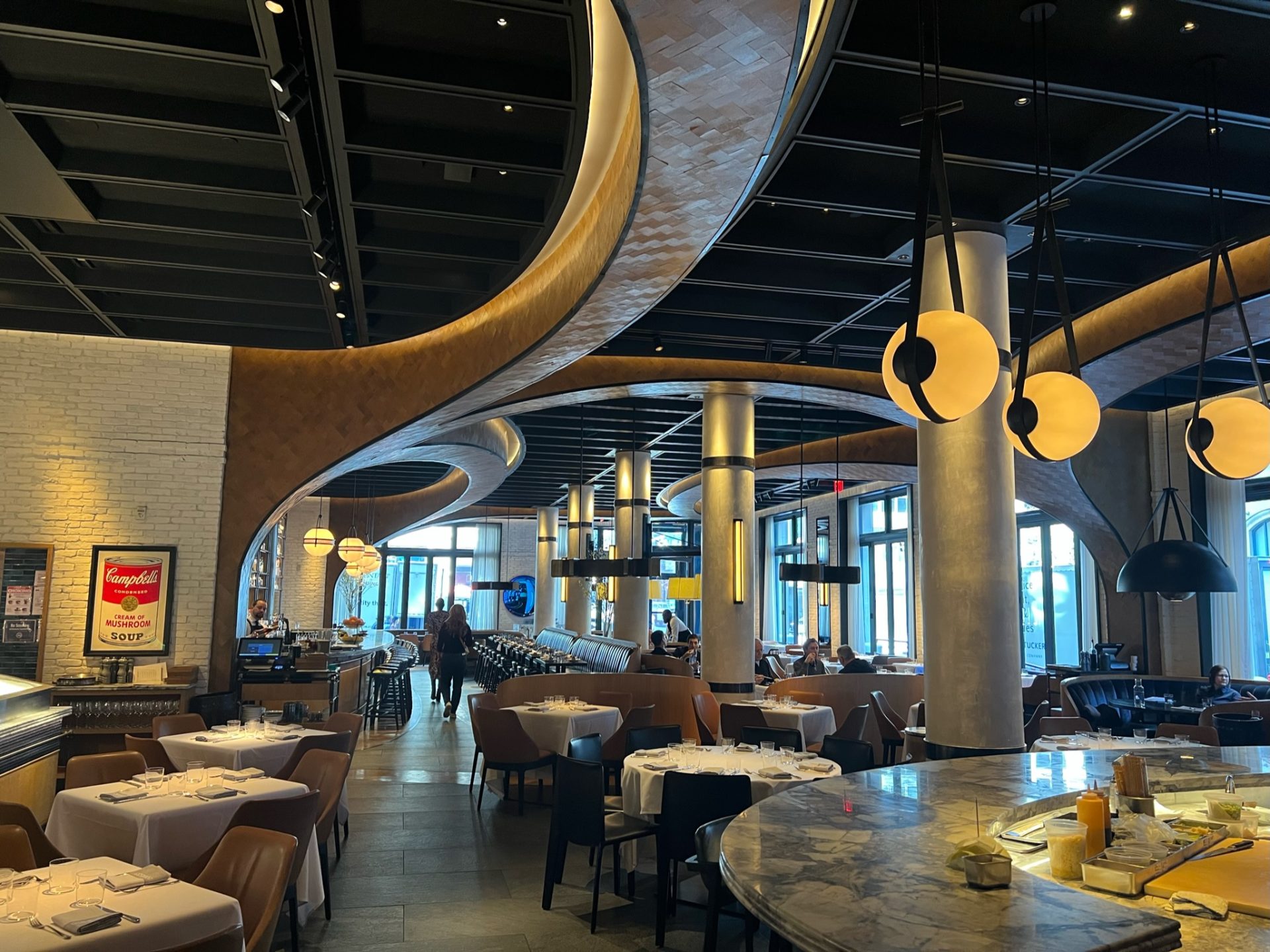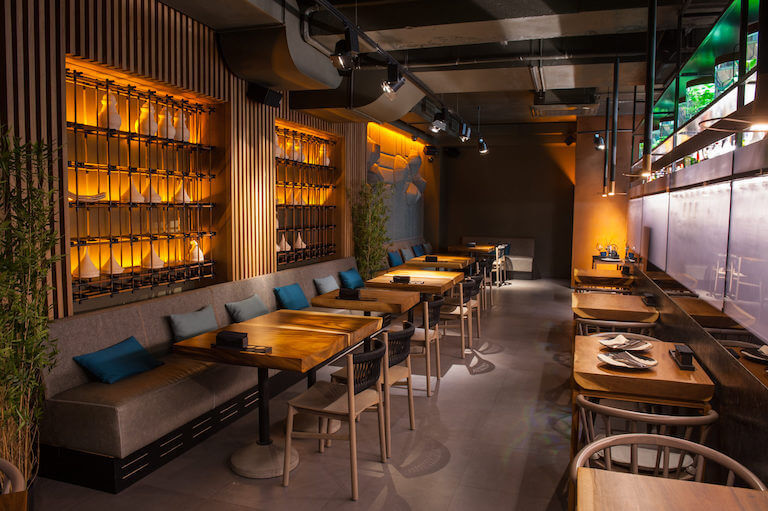Pan Asian Dining Islamabad: Savor Authentic Asian Dishes
Pan Asian Dining Islamabad: Savor Authentic Asian Dishes
Blog Article
Savor Genuine Asian Food With a Pan-Asian Twist for a Cooking Journey
Beginning on a culinary journey via authentic Eastern food, enhanced with a Pan-Asian twist, uses a special chance to check out the rich tapestry of tastes that specify the region's diverse culinary customs. This experience welcomes you to appreciate the exquisite balance of preferences-- wonderful, salty, spicy, and sour-- balanced by aromatic natural herbs and seasonings. Visualize the cutting-edge combination of Thai curry and ramen or the unexpected pleasure of sushi burritos. As you consider these attracting meals, think about the social narratives and historical impacts that shape them, each bite providing a tale waiting to be discovered.

Discovering Pan-Asian Flavors
In the world of worldwide gastronomy, Pan-Asian food stands out for its exceptional diversity and the unified interplay of flavors from different Oriental cultures. This culinary approach commemorates the special ingredients and abundant traditions located across the continent, creating a tapestry of preferences that is both intriguing and rewarding. Key to Pan-Asian food is its capacity to stabilize different flavors-- wonderful, salty, spicy, and sour-- while highlighting the quality and high quality of each component.
From the umami-rich soy sauce of Japan to the fiery chili peppers of Thailand, Pan-Asian food supplies an extensive combination of flavors. These components are commonly incorporated in creative means, enhancing meals with layers of complexity. For example, making use of fragrant natural herbs such as lemongrass and cilantro, usual in Vietnamese and Thai food, includes a revitalizing illumination to meals, while the incorporation of coconut milk supplies a creamy, abundant structure.
The focus on fresh produce and fragrant flavors guarantees that each meal is not just a banquet for the palate yet additionally for the detects. Pan-Asian food invites restaurants to begin on a culinary journey, exploring the huge and differed landscapes of Asian gastronomy with every bite.
Combination Dishes to Attempt
While Pan-Asian food is commemorated for its conventional flavors, the modern-day cooking landscape is progressively welcoming fusion dishes that blend these classic components with influences from various other areas. This innovative technique not only honors the rich heritage of Eastern cookeries however additionally introduces novel preference experiences that appeal to contemporary palates.
A prime instance of such a fusion meal is the Korean-Mexican taco, where marinated bulgogi beef is covered in a warm tortilla, topped with kimchi and a zesty gochujang-infused salsa. This mix marries the bold, full-flavored tastes of Korea with the dynamic, fresh components of Mexican food. In a similar way, sushi burritos have acquired popularity, amalgamating the delicate virtuosity of Japanese sushi with the passionate, hand-held convenience of a burrito, usually featuring combination ingredients like tempura shrimp and avocado with a drizzle of wasabi mayo.
One more significant dish is Thai curry ramen, which instills the luscious, aromatic flavors of Thai curry right into the reassuring brew of traditional Japanese ramen, developing an unified mix that entices the senses. These fusion meals prolong past plain uniqueness; they stand for a culinary discussion between cultures, encouraging exploration and advancement in the world of Pan-Asian food.
Crucial Ingredients and Flavors
To really appreciate Pan-Asian food, one need to comprehend the necessary active ingredients and seasonings that form its foundation. This varied culinary design attracts from an abundant tapestry of Oriental traditions, utilizing a harmonious mix of appearances and flavors. Key active ingredients include soy sauce, fish sauce, and oyster sauce, which impart a savory umami depth necessary to Asian recipes. Complementary to these are rice vinegar and mirin, offering a delicate level of acidity and sweet taste.
Aromatic elements are critical, with ginger, garlic, and lemongrass being ubiquitous across numerous Pan-Asian recipes. These components provide a fragrant base that improves the intricacy of tastes. Spices such as celebrity anise, cardamom, and cinnamon present heat and character, resembling influences from regions like China and India.

Food Preparation Methods and Tips
Understanding the art of Pan-Asian food requires experience with its distinct food preparation strategies, each contributing to the lively tapestry of flavors this culinary custom is commemorated for. Central to these approaches is the stir-fry, a fast food preparation strategy that protects the dietary stability and brilliant shades of active ingredients. Utilizing a wok, the stir-fry method permits even heat circulation, vital for accomplishing the particular texture and flavor balance of Pan-Asian dishes.
An additional essential strategy is steaming, particularly prevalent in Chinese food. This gentle approach maintains the all-natural flavors and nutrients of active ingredients, making it suitable for seafood and vegetables. Dumplings, a beloved staple, often take advantage of steaming, causing soft, delicious appearances.
Cooking, additionally essential, imparts great smoky depths to recipes such as Oriental bulgogi or Japanese yakitori (Romantic restaurants Islamabad). This method commonly entails marinating active ingredients, enabling tastes to pass through deeply prior to cooking over an open flame or warmer
Finally, grasping the art of stabilizing flavors-- wonderful, sour, salted, bitter, and umami-- is important. Effectively layering these elements can raise a meal from average to phenomenal, supplying a complex and satisfying cooking experience that embodies the significance of Pan-Asian cuisine.
Eating Experiences Worldwide
Throughout the world, Pan-Asian cuisine uses an unrivaled dining experience, commemorated for its rich tapestry of tastes and vibrant presentations. This culinary sensation has thai house actually transcended social limits, catching the hearts and tastes buds of food lovers worldwide. In multicultural cities like New York, London, and Sydney, Pan-Asian dining establishments work as fusions where culinary practices from Thailand, Japan, China, and beyond assemble, providing restaurants with an eclectic mix of meals that highlight the area's diversity.
The worldwide allure of Pan-Asian food lies in its capacity to provide both authenticity and technology. Cooks masterfully marry standard components such as lemongrass, soy sauce, and miso with contemporary methods, causing dishes that are both acquainted and refreshingly brand-new. This blend permits diners to start a culinary trip that appreciates heritage while embracing modernity.
In addition, eating experiences are elevated with attentively created atmospheres that show the ethos of Pan-Asian aesthetic appeals. From minimal Japanese-inspired interiors to lively Thai-themed areas, each dining establishment supplies an one-of-a-kind setting that matches the cooking offerings. Therefore, customers are not simply eating a dish but partaking in a social experience, making Pan-Asian dining an absolutely worldwide phenomenon.
Conclusion
The expedition of Pan-Asian food supplies an extensive understanding of the detailed interaction of flavors and cooking traditions across Asia. By embracing fusion dishes such as Thai curry ramen and sushi burritos, the cooking journey not only highlights the versatility of typical components but also showcases innovative contemporary techniques. This gastronomic adventure, enhanced by necessary seasonings and cooking methods, offers an one-of-a-kind opportunity to value the cultural diversity and culinary creativity that define Pan-Asian cuisine on a worldwide range.
Getting started on a culinary journey through authentic Asian cuisine, enhanced with a Pan-Asian spin, offers an one-of-a-kind possibility to discover the abundant tapestry of flavors that define the area's diverse culinary practices.In the world of global gastronomy, Pan-Asian cuisine stands out for its exceptional diversity and the unified interaction of tastes from various Eastern societies. Key to Pan-Asian cuisine is its capacity to stabilize contrasting flavors-- pleasant, salted, spicy, and sour-- while highlighting the freshness and high quality of each component.

Report this page